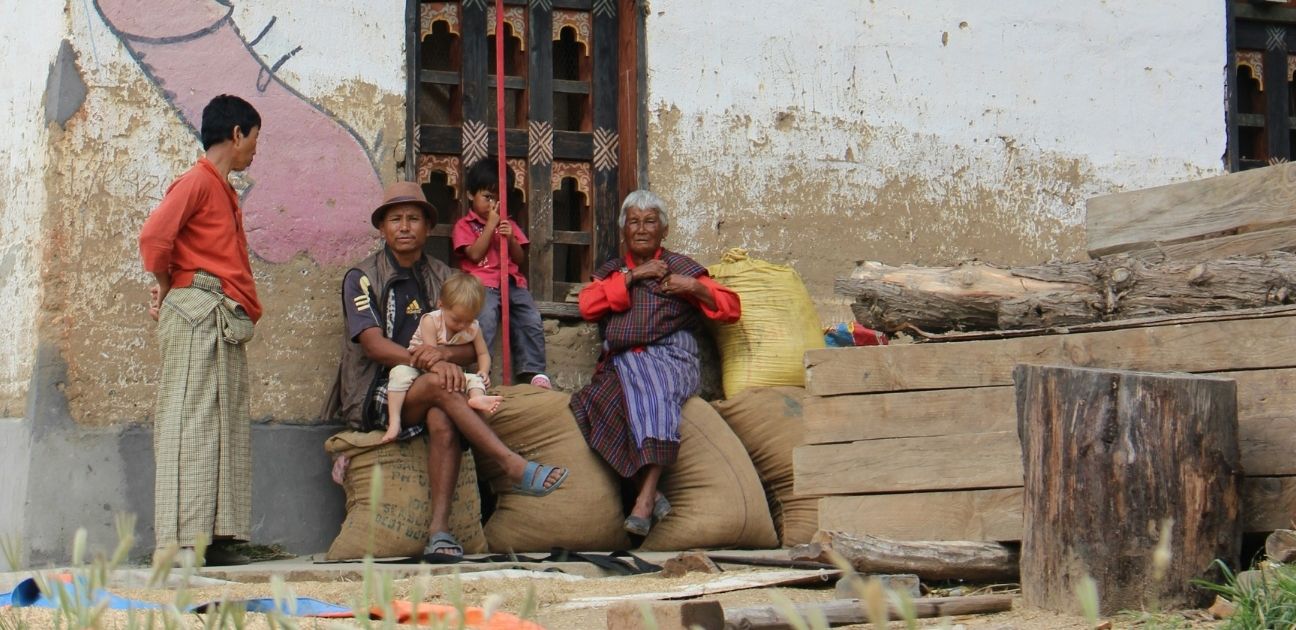



In Bhutan, it’s the small gestures that stay with you. A monk’s gentle nod as you pass, the scent of pine smoke drifting from a kitchen hearth, the soft hum of prayer wheels spun with reverence. Tucked between the towering peaks of the eastern Himalayas, this is a country that has long measured progress not in profit, but in happiness. The kingdom’s gentle pace and deep spiritual core offer travellers something rare: a cultural experience that feels not curated, but lived.
Whether it’s walking through ancient dzongs, sharing ara (a local spirit) with a farmer in his field, or hiking through rhododendron forests to monasteries that appear to hang from cliffs, Bhutan invites you to take your time. Here, encounters aren’t transactional. They unfold. And for those willing to slow down, the rewards are as profound as the mountains themselves.
One of the best ways to connect with Bhutanese culture is by staying in a traditional farmhouse. Scattered across valleys like Punakha, Haa, and Paro, these homes are usually built from rammed earth and timber, adorned with auspicious symbols painted on their facades. While amenities are simple, the hospitality is heartfelt. You'll often share meals with your host family, sit by the wood-burning stove, and fall asleep to the sounds of wind and livestock. It's an intimate window into local rhythms — a world away from commercial tourism.
For a touch of refinement without losing authenticity, properties like Nimmu House in the Thimphu Valley offer restored heritage accommodation with comfort and soul. Expect Bhutanese architecture, handmade textiles, and slow, seasonal food. These aren’t hotels in the traditional sense — they are quiet cultural bridges, keeping ancestral stories alive.
Trekking in Bhutan is more than a physical journey — it’s a spiritual one. The most iconic route leads to Taktsang Monastery (Tiger’s Nest), perched impossibly on a cliff above the Paro Valley. But there are countless lesser-known trails that trace old pilgrimage routes, winding past fluttering prayer flags, chortens, and pine-covered ridges. Each step is an invitation to reflection.
Consider the Bumthang Cultural Trek — a gentle multi-day journey through villages, monasteries, and pastures, where you'll likely be offered butter tea or fresh fruit by locals along the way. Unlike the more rigorous treks of Nepal, Bhutanese routes are often designed with contemplation in mind, where the focus is on presence rather than peak-bagging.
If your visit aligns with one of Bhutan’s many tsechus (Buddhist festivals), you're in for something unforgettable. Held in temple courtyards and dzongs, these vibrant gatherings feature masked dances, music, and ritual theatre that date back centuries. While tourists are welcome, the festivals are primarily for the Bhutanese themselves — a joyous, communal reaffirmation of faith and tradition.
Dress modestly, be respectful, and if invited to share a meal or take a photo, do so with gratitude. Festivals like the Paro Tsechu or the Thimphu Tsechu are among the most famous, but smaller village celebrations often offer a more intimate experience, with fewer cameras and more connection.
Bhutan’s creative traditions are still very much alive — not behind glass but in studios, schools, and homes. In Thimphu, the National Institute for Zorig Chusum (School of Arts and Crafts) trains young people in the 13 traditional arts, from wood carving and thangka painting to embroidery and statue-making. A visit offers insight into how deeply craftsmanship is woven into everyday life.
You can also commission or purchase work directly from artisan collectives or social enterprises like Bhutan Made or SABAH Bhutan. Unlike souvenir markets elsewhere in Asia, much of what is sold here has been handmade with meaning and pride.
Bhutanese cuisine is grounded in altitude and attitude — warm, sustaining, and modestly spiced. The national dish, ema datshi (chilli and cheese stew), is a daily staple, and red rice grown in highland paddies forms the base of most meals. Meat is eaten but often dried or smoked, and meals are usually accompanied by ezay (a chilli relish) and butter tea.
Join a cooking class in Paro or Punakha to learn how to prepare these dishes from scratch. Or dine at one of the new wave of boutique restaurants popping up in Thimphu, where chefs are reinterpreting traditional flavours with contemporary sensibility. Sustainability is central — much of the food is grown within walking distance, and zero-waste practices are often built into kitchen routines.
For those looking to experience Bhutan’s cultural depth without compromising on design and comfort, a new generation of boutique properties are making that possible. Amankora lodges, spread across five valleys, combine pared-back luxury with Bhutanese elegance — ideal for those seeking meditative stillness after long days of exploration. Zhiwa Ling Heritage in Paro is another standout, built in traditional style with carved timber and stone masonry, and fully Bhutanese-owned and operated.
If sustainability is key, Gangtey Lodge is a shining example. Overlooking the Phobjikha Valley, this warm, timber-framed retreat supports local conservation efforts and maintains deep relationships with nearby villages. It’s thoughtful tourism at its finest — the kind that doesn’t just witness culture, but contributes to its continuity.